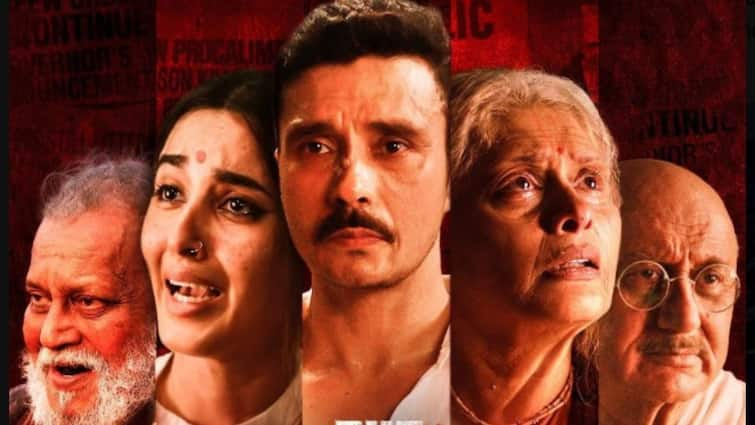The Bengal Files Review: Vivek Agnihotri’s Hard-Hitting Film Shakes You To The Core
The issue with films like these is that very few people care about the film’s actual quality. Most are only interested in the agenda or propaganda. Supporters will praise it regardless, and detractors will criticise it, even if they haven’t watched it. That’s how it usually goes with films like this. After The Tashkent Files and The Kashmir Files, Vivek Ranjan Agnihotri now opens The Bengal Files, and he does so with powerful impact. The Story The film presents two Bengal narratives, one from the present day and one from the pre-Independence era. It touches upon Direct Action Day and showcases the riots in Noakhali, portraying the Hindu genocide. How all of this is depicted, you should witness it on screen; revealing more would take away from the experience. How Is the Film? This is a hard-hitting film. Several scenes will shock you, disturb you, and leave you emotionally unsettled. Some parts are genuinely difficult to watch. So if you’re faint-hearted, proceed with caution. The riot scenes are portrayed with such brutality that they compel you to question, Did this really happen? Even the portrayal of current-day Bengal is startling. The pre-Independence setting has been recreated authentically. The only major drawback of the film is its length—it runs nearly three and a half hours. Some monologues feel unnecessarily prolonged. However, perhaps director Vivek Agnihotri felt this depth was essential to deliver the full impact. A slightly shorter runtime could have made the film more impactful. For instance, Mithun Chakraborty’s track feels completely unnecessary. His role adds no real value, and it’s hard to grasp what he's even saying, though that may have been the nature of the character, he fails to justify its presence. Performances Darshan Kumar delivers a standout performance. Playing a conflicted CBI officer torn between following orders and doing what’s right, he breathes life into the role of Amar. Anupam Kher, portraying Mahatma Gandhi, reminds us why he’s among the finest actors in Indian cinema. Pallavi Joshi, through her silence alone, delivers a powerhouse performance—you can only truly experience it on the big screen. Simrat Kaur, playing the younger version of Pallavi’s character, impresses with her nuanced portrayal. After a commercial film like Gadar 2, this role is a surprising shift. Saswata Chatterjee plays a ruthless MLA with chilling conviction. Namashi Chakraborty is another surprise in the film. Eklavya Sood brings intensity to his role as a Sikh character. Again, Mithun Chakraborty’s character seems dispensable and confusing, and even though the role is written that way, he doesn’t manage to make it convincing. Direction & Writing Vivek Agnihotri’s writing is commendable. His research is beyond question, but that becomes part of the problem too. The research is so extensive, it feels overwhelming for a single film, which leads to the extended runtime. However, the direction is solid, and Agnihotri succeeds in creating an atmosphere that’s immersive and haunting. Final Verdict Watch the film and decide for yourself.

The issue with films like these is that very few people care about the film’s actual quality. Most are only interested in the agenda or propaganda. Supporters will praise it regardless, and detractors will criticise it, even if they haven’t watched it. That’s how it usually goes with films like this. After The Tashkent Files and The Kashmir Files, Vivek Ranjan Agnihotri now opens The Bengal Files, and he does so with powerful impact.
The Story
The film presents two Bengal narratives, one from the present day and one from the pre-Independence era. It touches upon Direct Action Day and showcases the riots in Noakhali, portraying the Hindu genocide. How all of this is depicted, you should witness it on screen; revealing more would take away from the experience.
How Is the Film?
This is a hard-hitting film. Several scenes will shock you, disturb you, and leave you emotionally unsettled. Some parts are genuinely difficult to watch. So if you’re faint-hearted, proceed with caution. The riot scenes are portrayed with such brutality that they compel you to question, Did this really happen?
Even the portrayal of current-day Bengal is startling. The pre-Independence setting has been recreated authentically.
The only major drawback of the film is its length—it runs nearly three and a half hours. Some monologues feel unnecessarily prolonged. However, perhaps director Vivek Agnihotri felt this depth was essential to deliver the full impact. A slightly shorter runtime could have made the film more impactful.
For instance, Mithun Chakraborty’s track feels completely unnecessary. His role adds no real value, and it’s hard to grasp what he's even saying, though that may have been the nature of the character, he fails to justify its presence.
Performances
Darshan Kumar delivers a standout performance. Playing a conflicted CBI officer torn between following orders and doing what’s right, he breathes life into the role of Amar.
Anupam Kher, portraying Mahatma Gandhi, reminds us why he’s among the finest actors in Indian cinema.
Pallavi Joshi, through her silence alone, delivers a powerhouse performance—you can only truly experience it on the big screen.
Simrat Kaur, playing the younger version of Pallavi’s character, impresses with her nuanced portrayal. After a commercial film like Gadar 2, this role is a surprising shift.
Saswata Chatterjee plays a ruthless MLA with chilling conviction.
Namashi Chakraborty is another surprise in the film.
Eklavya Sood brings intensity to his role as a Sikh character.
Again, Mithun Chakraborty’s character seems dispensable and confusing, and even though the role is written that way, he doesn’t manage to make it convincing.
Direction & Writing
Vivek Agnihotri’s writing is commendable. His research is beyond question, but that becomes part of the problem too. The research is so extensive, it feels overwhelming for a single film, which leads to the extended runtime.
However, the direction is solid, and Agnihotri succeeds in creating an atmosphere that’s immersive and haunting.
Final Verdict
Watch the film and decide for yourself.







